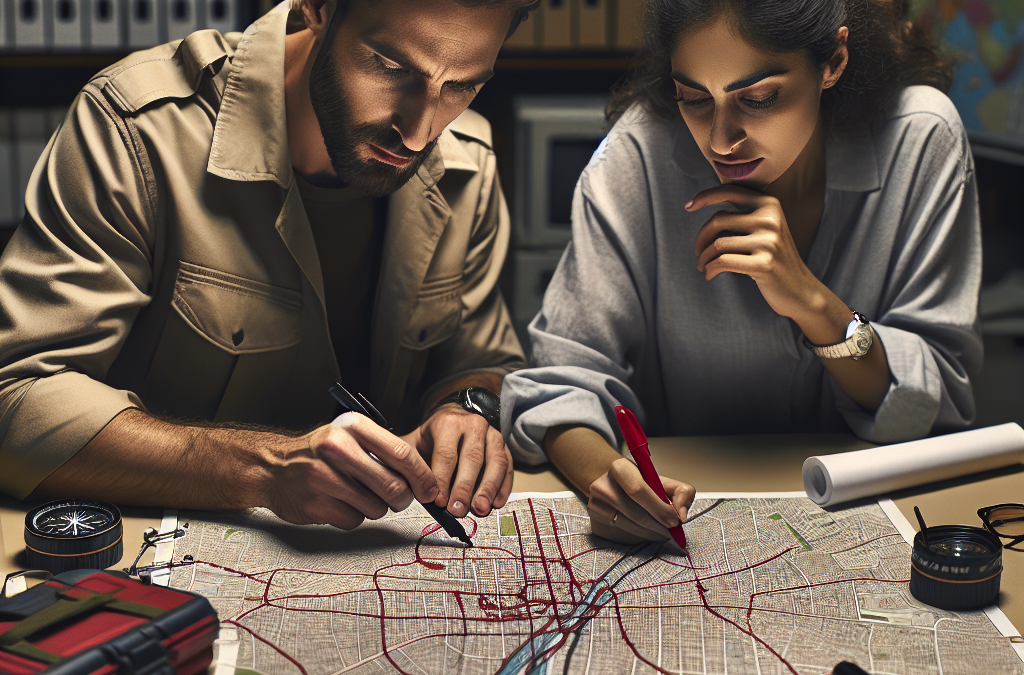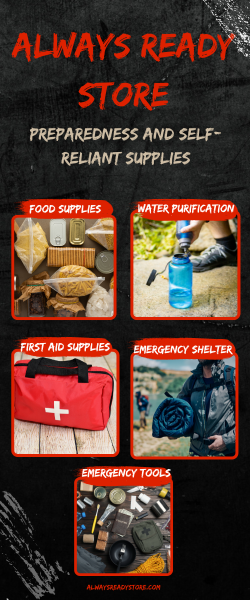Assessing Your Evacuation Routes
Understand Your Surroundings
First thing’s first, understanding your surroundings is crucial. It’s not just about knowing the roads; it’s about being aware of the potential hazards around you. Whether it’s a natural disaster like a hurricane or a fire, knowing the layout of your neighborhood can save you heaps of time and stress when the need arises.
Take a stroll around your area. Identify main streets, alternative routes, and areas that could be potential choke points during an emergency situation. You might find shortcuts or hidden paths that could offer a safer escape route. Plus, familiarizing yourself with landmarks can also help you stay calm under pressure.
Map out these routes and keep them handy. Whether it’s an app on your phone or a good old-fashioned paper map, having a clear idea of your possible escape routes is vital to ensuring the best chance of a smooth evacuation.
Identify Safe Zones
Next, let’s talk about safe zones. Even if your primary route is blocked, it’s super important to know where you can go to find shelter or help. This could be a friend’s house, a community center, or even a designated evacuation point in your area.
Every neighborhood has those hidden gems. It could be a local school or a church that opens its doors for emergencies. Knowing these spots can give you peace of mind; if all else fails, you have a safe haven to escape to.
After identifying these safe zones, make sure to clarify how you can reach them from various points in your area. Having a plan not only reduces panic but also gives you that safety net, knowing you’re heading toward security and support instead of just running blind.
Thank you for reading this post, don't forget to subscribe NOW for FREE!
Consider Traffic Patterns
You’d think that when panic strikes, the last thing on our minds is traffic, right? But understanding traffic patterns can be revolutionary when planning your evacuation. During an emergency, everyone’s gonna be hitting the road at the same time, which can create massive gridlocks.
Spend some time observing traffic flow during different times of the day. Certain routes may be more congested during peak hours, and knowing this can help you to plan alternatives that could save your bacon in a crisis.
Also, don’t underestimate the power of local alerts. Many cities have apps or services that provide updates on road conditions and closures. Keeping tuned in can provide real-time information and help you dodge those pesky traffic jams.
Creating an Evacuation Plan
Outline Your Steps
Once you have your routes and safe zones mapped out, outlining your evacuation steps is next. To get started, think about what you need to pack in case of an evacuation. Essentials like food, water, and medicines should be prioritized in your plan.
Write these steps down and keep them visible. It might sound a bit old school, but having something physical to look at reduces the chances of forgetting something crucial while you’re in a scramble. Plus, it can be helpful for other family members or friends to know the plan, keeping everyone in the loop.
Practice makes perfect. Just like any kind of planning, running through your evacuation plan will help engrain it in your memory. Grab the family, do a quick rehearsal, and let everyone know what to expect. This will help alleviate any anxiety when the time comes to put that plan into action.
Communicate with Your Family or Group
Communication is key. Make sure that everyone involved knows the plan and the routes you’ve chosen. Use group chats or family meetings to ensure that everyone understands their tasks and roles during an evacuation. Trust me, it helps reduce confusion.
Designate a point person who can help coordinate actions and relay updates. While it’s important for everyone to be informed, having a central communicator can streamline efforts and make sure things run smoothly as nerves may start to fray.
Also, discuss emergency contact numbers and methods to stay in touch if you get separated. Having a fallback plan will ease worries for both you and your family in stressful situations. Just knowing that everyone has each other’s backs makes a massive difference!
Prepare an Emergency Kit
Next up, let’s chat about emergency kits. This is something I truly swear by when preparing for any unexpected situations. An emergency kit can be your lifesaver, so you want to make sure it’s stocked and accessible.
For starters, it should include essential items like water, non-perishable food, a flashlight, batteries, a first-aid kit, and emergency contact information. When packing the kit, think about your family’s specific needs—like medicines or baby supplies if you have little ones.
Don’t forget to routinely check your emergency kit and refresh its contents as needed! You wouldn’t want to reach for your supplies in a crisis only to find that the snacks are expired or it’s missing a flashlight. Keeping everything up to date is crucial!
Staying Informed During an Evacuation
Use Technology to Your Advantage
During an evacuation, information is power. Leveraging technology can give you a leg up on chaotic situations. There are some incredible apps out there, from weather alerts to emergency news updates that will keep you in the loop.
Having your phone charged and ready is vital. Make sure you have your emergency contact list and any apps that will help you navigate road conditions and alerts. Staying informed can help you make the best decisions on the fly, allowing you to dodge potential pitfalls.
Additionally, don’t forget the good ol’ radio. Sometimes, when all else fails, a battery-operated radio can keep you updated with the latest information when the power is out or cellular networks are jammed.
Monitor Local Agencies and News
Another key element is staying tuned to local agencies and news. It’s tempting to only watch national news, but local stations will provide specific details relevant to your area. They can give you information about the safety of roads, updates on emergencies, and any changes to shelter locations.
Follow local emergency service accounts on social media platforms for real-time updates. Many agencies are increasingly using these platforms to share essential information quickly, which can be a game changer during a crisis.
Consider also signing up for local alert systems where you can receive emergency messages directly to your phone. The more plugged in you are, the better prepared you’ll be to make quick decisions.
Keep an Eye on Weather Conditions
Never underestimate Mother Nature! Regularly checking the weather can help you gauge whether it’s best to hold tight or get moving. Apps and websites have made this super easy. You can track real-time weather updates right on your phone.
Pay special attention to forecasts and warnings. If a storm is rolling in, you’ll want to be on top of that, planning your route accordingly. Also, check for any changes in local travel conditions and road safety.
Prepare for the worst, but hope for the best! Having a backup plan based on changing weather conditions can often mean the difference between a smooth evacuation and a chaotic scramble.
Reviewing and Practicing Your Plan
Regularly Update Your Plans
Life changes, and so should your evacuation plan. Family structures might change, job situations might shift, or the neighborhood itself may evolve. Reviewing and updating your plans ensures that everyone’s needs are still met.
At least once a year, go over the plan as a family. Discuss any changes that might affect the original strategy, and take the time to adjust your routes and emergency kits as necessary. This proactive step saves you from being unprepared in the heat of the moment.
Engage everyone in this discussion. Keeping everyone involved fosters a sense of responsibility and unity in dealing with emergencies. Plus, it can be a fun exercise to explore new routes or decide on new safe zones together!
Conduct Drills
Practicing your evacuation plan may sound a bit over the top, but those drills can provide significant benefits. Conducting family evacuation drills allows everyone to understand their role, know the routes, and get acquainted with the emergency kit.
This drill doesn’t have to be elaborate; just doing a quick run-through can help. You can set a timer to simulate a sense of urgency. It can be surprising how practicing a simple routine can enhance your clarity and confidence during a real situation.
Not only does this create familiarity, but it also builds teamwork. As a family, you’ll learn to communicate and rely on each other, ensuring that the process feels less daunting when it really counts.
Review After Each Event
When calm is restored after an evacuation or drill, gather the family and talk about how things went. Reviewing your response after an event is crucial for improvement. What worked well? What didn’t? You can only improve on what you critique.
This review process can create a healthy discussion around fears, adjustments needed, and lessons learned, making it a bonding experience. Plus, it reinforces a culture of preparation that will serve your family best in future emergencies.
As time goes on, also encourage any new family members who join to participate and familiarize themselves with your evacuation plan. The more practiced you are as a family, the more confident you’ll feel!
FAQ
What should I include in my emergency kit?
Your emergency kit should include essentials like water, non-perishable food, a flashlight, extra batteries, a first-aid kit, personal medications, and a battery-operated radio. Don’t forget personal identification and important documents!
How often should I review my evacuation plan?
It’s best to review your plan at least once a year. However, any significant life changes or changes in your neighborhood might warrant an immediate review.
Can I rely solely on technology during an evacuation?
While technology can provide real-time updates, it’s crucial to have a backup system, like a battery-operated radio in case of power outages, as you can’t fully rely on tech during emergencies.
How can I ensure my family is ready for an evacuation?
Engage in conversations about the evacuation plan, conduct practice drills regularly, and ensure everyone knows their roles. Staying updated and involved fosters confidence and readiness in your family.
Why should I identify multiple routes for evacuation?
Identifying multiple routes prepares you for unforeseen circumstances, like road closures or congestion. Having alternatives can significantly reduce stress and time during an emergency.
Related Content
- Survival Skills Everyone Should Master Before the Next Crisis Hits
- Significance Of Hygiene In Your Emergency Situation Preparedness Plan
- Preparing for the Worst: A Comprehensive Checklist for Disaster Preparedness
- Specific Steps for Emergency Preparedness: A Comprehensive Guide
- Meals Storage Space Guide To Emergency Situation Preparedness






